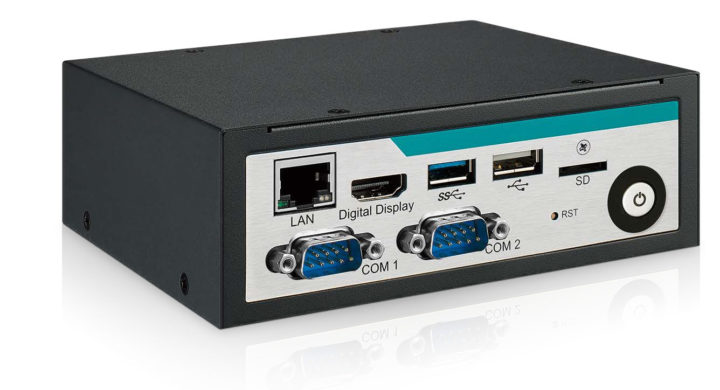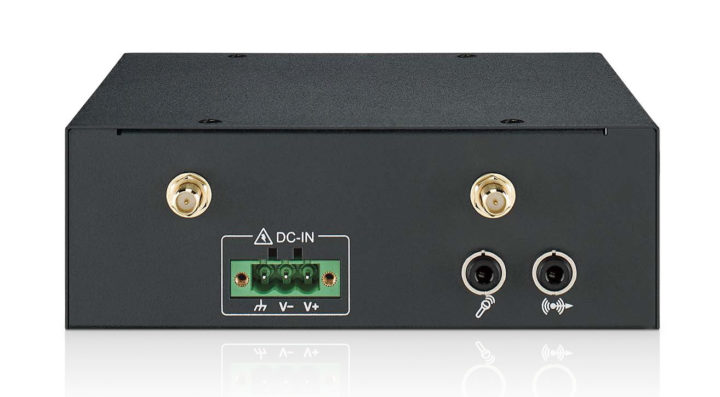Vecow EIC-1000 in an industrial Edge AI computer powered by Rockchip RK3399 hexa-core Cortex-A72/A53 processor with 9V to 55VDC wide-range supply input, an operating temperature range of 0°C to 70°C, and designed for digital signage, factory automation, smart retail, and other AIoT/Industry 4.0 applications.
The fanless mini PC is equipped with 2 GB DDR3 SDRAM and 32GB eMMC flash, offers 4K video output via HDMI, Gigabit Ethernet, USB 3.0/2.0, and RS232/RS485 serial ports, and more.

- SoC- Rockchip RK3399 hexa-core Arm processor with dual-core Arm Cortex-A72 @ 2.0 GHz, quad-core Cortex-A53 @ 1.6GHz, Arm Mali-T860MP4 GPU
- System Memory – 1GB or 2GB DDR3L 1066MHz SDRAM
- Storage – 32GB eMMC flash, MicroSD card socket
- Video Output – HDMI 2.0 output up to 4Kp60
- Video
- Encoder – Up to 1080p30 H.264/MVC/VP8
- Decoder
- Up to 4Kp60 H.264/H.265 10-bit, VP9
- Up to 1080p60 MPEG-4/MPEG-2/VP8
- Audio – 3.5mm headphone and microphone jacks,
- Networking
- Gigabit Ethernet RJ45 port
- Optional mPCIe module for WiFi & BLuetooth plus 2x antennas
- USB – 1x USB 3.1 Type A, 1x USB 2.0 Type A
- Serial – 2x RS-232/422/485 DB9 ports
- Expansion – Half-size Mini PCIe socket for PCIe card
- Misc – Power & Reset buttons
- Power Supply – 9V to 55V DC via 3-pin terminal block with V+, V-, Frame Ground
- Dimensions – 136 x 110 x 46.8mm
- Weight – 400 grams
- Temperature Range – Operating: 0°C to 70°C; storage: -40°C to 85°C
- Humidity – 5% to 95% Humidity, non-condensing
- Shock – IEC 60068-2-27
- Vibration – IEC 60068-2-64
- EMC – CE, FCC, EN50155, EN50121-3-2
The mini PC supports wall-mounting, and optional DIN Rail mounting through an additional kit. Vecow EIC-1000 can run either Android 7.1 or Debian 9.0 (Linux), which are older versions of the operating systems, but that’s probably because the processor was announced in 2016, and the company decided to rely on SDKs provided by Rockchip.
As a quick note, mainline Linux does support most of RK3399/RK3399K features, but the status matrix on Rockchip’s open-source website shows incomplete HDMI support and a complete lack of GPU and VPU support. But I’m not quite sure the table is up to date, as the recent Debian 11 release specifically added the Panfrost open-source GPU driver for Arm Mali-T860 and various other Mali graphics processors.
The press release we’ve received by email does not provide availability nor pricing information about Vecow EIC-1000 RK3399-based industrial computer. Further details may be found on the product page.

Jean-Luc started CNX Software in 2010 as a part-time endeavor, before quitting his job as a software engineering manager, and starting to write daily news, and reviews full time later in 2011.
Support CNX Software! Donate via cryptocurrencies, become a Patron on Patreon, or purchase goods on Amazon or Aliexpress





